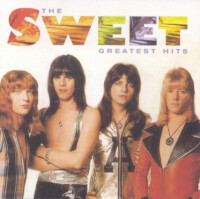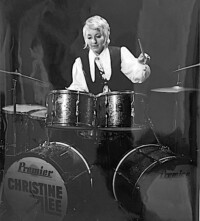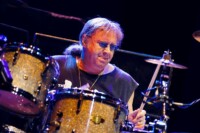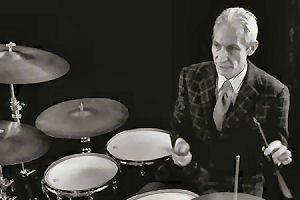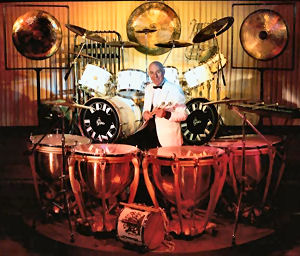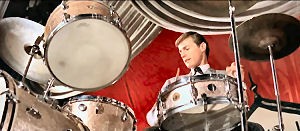 In the same way Bert Weedon, or at least his ‘Play In A Day’ tutor book, turned on ‘British Baby Boomers’ like Eric Clapton, Peter Green, Jimmy Page, Jeff Beck et al to the possibilities offered by the guitar, Tony Meehan did the same thing to the drummers of my generation. Unlike Jerry Allison, who was the subject of his own Groovers and Shakers earlier, we were fortunate in not only hearing what Tony was doing on record we could actually see exactly how he was doing it on the one or two embryonic music TV programmes, like ‘6.5 Special’ we got to see live on a Saturday night in monochrome. So it’s fair to say that Tony Meehan was to embryonic British ‘rock and roll’ drumming what Buddy Rich and Gene Krupa were to the UK’s Jazz drummers. Of course there were other drummers for us to stay in and watch on TV but somehow you could tell Tony was a proper rock and roll player and we watched him intently. He wasn’t just playing this new music because his jazz gigs had dried up and neither were Clem Cattini, Bobbie Elliott, Brian Bennett or any of a great many others. Even though these guys’ heroes may well have been the obvious ones – Rich, Krupa, Morello et al – they didn’t want to emulate their playing, they simply wanted to assimilate it. For example, part of Brian’s ‘Little B’ drum solo from 1962 is an homage to Max Roach and Tony Meehan was inspired by him too.
In the same way Bert Weedon, or at least his ‘Play In A Day’ tutor book, turned on ‘British Baby Boomers’ like Eric Clapton, Peter Green, Jimmy Page, Jeff Beck et al to the possibilities offered by the guitar, Tony Meehan did the same thing to the drummers of my generation. Unlike Jerry Allison, who was the subject of his own Groovers and Shakers earlier, we were fortunate in not only hearing what Tony was doing on record we could actually see exactly how he was doing it on the one or two embryonic music TV programmes, like ‘6.5 Special’ we got to see live on a Saturday night in monochrome. So it’s fair to say that Tony Meehan was to embryonic British ‘rock and roll’ drumming what Buddy Rich and Gene Krupa were to the UK’s Jazz drummers. Of course there were other drummers for us to stay in and watch on TV but somehow you could tell Tony was a proper rock and roll player and we watched him intently. He wasn’t just playing this new music because his jazz gigs had dried up and neither were Clem Cattini, Bobbie Elliott, Brian Bennett or any of a great many others. Even though these guys’ heroes may well have been the obvious ones – Rich, Krupa, Morello et al – they didn’t want to emulate their playing, they simply wanted to assimilate it. For example, part of Brian’s ‘Little B’ drum solo from 1962 is an homage to Max Roach and Tony Meehan was inspired by him too.
But I digress, Daniel Joseph Anthony Meehan was born to Irish parents in Hampstead in the genteel part of London on March 2nd, 1943. He became interested in drums not long before he passed his 11+ exams and progressed to a Grammar school in the North London area he grew-up in. Here he seems to have done rather well. He was diminutive in stature at around five foot tall and of the music people I knew in those days, only Adam Faith was as short as that. But when Tony hit the drums you knew he meant it.
So at the end of the fifties musicians were just emerging from what the newspapers called the ‘Skiffle Craze’ which had been largely drum-less mainly because it used much cheaper, not to mention easier to play, washboards to create the rhythmic feel. Tony was very different because even though he was playing the same ‘do-it-yourself’ music as thousands more of us in the UK, he was doing it with a proper drum set.
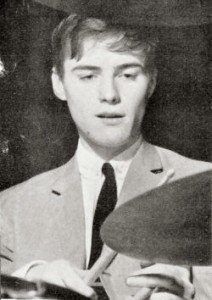 At the time Tony was also playing timpani in the London Youth Orchestra and he really could play. He was a weekly pupil of Max Abrahams and definitely knew his stuff. Max was a Scot and something of a disciplinarian, he gave Tony technique and it showed. Listen to the rudiments he played on ‘See You In My Drums’ which was a drum instrumental track on an album from 1961 called ‘The Shadows’. Even more than half a century after the event there’s some stuff going on that record which is tricky to play! That album was not only the first Number 1 by an instrumental group; it was the first by a British group to top the charts and stayed there for six weeks. Tony would have been 18 at the time, although when he joined the group (who were formed simply to back Cliff Richard) he was only 15 and lied about his age. This of course meant he should have been in school rather than out on the road. His up-market school unbelievably gave him a sabbatical from which he never returned. This disappointed his parents who wanted him to be a lawyer. Tony was an accomplished pianist and I’m guessing around this time he was having piano lessons but I’m afraid I don’t know where, or with whom.
At the time Tony was also playing timpani in the London Youth Orchestra and he really could play. He was a weekly pupil of Max Abrahams and definitely knew his stuff. Max was a Scot and something of a disciplinarian, he gave Tony technique and it showed. Listen to the rudiments he played on ‘See You In My Drums’ which was a drum instrumental track on an album from 1961 called ‘The Shadows’. Even more than half a century after the event there’s some stuff going on that record which is tricky to play! That album was not only the first Number 1 by an instrumental group; it was the first by a British group to top the charts and stayed there for six weeks. Tony would have been 18 at the time, although when he joined the group (who were formed simply to back Cliff Richard) he was only 15 and lied about his age. This of course meant he should have been in school rather than out on the road. His up-market school unbelievably gave him a sabbatical from which he never returned. This disappointed his parents who wanted him to be a lawyer. Tony was an accomplished pianist and I’m guessing around this time he was having piano lessons but I’m afraid I don’t know where, or with whom.
You couldn’t be in a group at the very beginning of the sixties without playing a lot of Cliff Richard songs, as well as slavishly copying instrumentals by the Shadows. Not long before Tony joined them around 1959 (and replaced a chap called Terry Smart) he was playing regularly downstairs in a Soho coffee bar called the ‘2-Is’ where he replaced Brian Bennett in the house band. Here he backed the likes of Marty Wilde, Adam Faith, Duffy Pride, Vince Taylor, Tony Sheridan and many other hopeful and exotically-named singers looking to make it in the business. This list of course included Cliff Richard. The ’I’s’ was where he was discovered by the other soon-to-be Drifters musicians and started his journey on the road to success. He had been in the UK’s second most popular skiffle group called The Vipers not long before this. They were headed by a chap called Wally Whyton and Jet Harris was the bass player and some accounts attest to the fact that Hank Marvin and Bruce Welch from the Drifters happened to be in it too. Hence the obvious connection.
Skiffle was arguably on its way out by 1958 and fortunately Hank and Bruce recommended Tony to Cliff’s people and as I said, even though he was only three years into his teens at the time he got the gig.
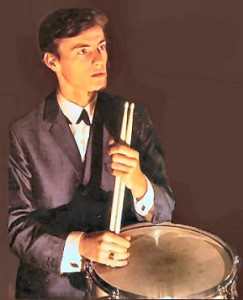 Tony Meehan was on TV more than anybody else from 1959 to 1961 because he played with ‘Cliff Richard and the Drifters’ a group who, in those pre-Beatles days, were at least as popular as sliced-bread. He stayed with the group for three years doing one-nighters, package tours, summer seasons, pantomimes, variety shows, Royal Command Performances, recordings, films and TV and radio shows before calling it a day and moving on. One of the reasons he left could well have been because of the first (and last?) exhausting American bus tour they made around 1960 (when Apache was released) about which Tony always said he slept sitting-up on the bus for the whole time. He told me he saw nothing of the country and if he wasn’t asleep he was doing the gig or eating! The Shadows were static for a while doing a 13 week season at the London Palladium but this may have brought its own problems brought about by being held captive in one place for a quarter of the year.
Tony Meehan was on TV more than anybody else from 1959 to 1961 because he played with ‘Cliff Richard and the Drifters’ a group who, in those pre-Beatles days, were at least as popular as sliced-bread. He stayed with the group for three years doing one-nighters, package tours, summer seasons, pantomimes, variety shows, Royal Command Performances, recordings, films and TV and radio shows before calling it a day and moving on. One of the reasons he left could well have been because of the first (and last?) exhausting American bus tour they made around 1960 (when Apache was released) about which Tony always said he slept sitting-up on the bus for the whole time. He told me he saw nothing of the country and if he wasn’t asleep he was doing the gig or eating! The Shadows were static for a while doing a 13 week season at the London Palladium but this may have brought its own problems brought about by being held captive in one place for a quarter of the year.
By the sixties the ‘UK’ Drifters had been threatened with legal action by Ben E. King’s people having appropriated their by now rather auspicious name, and this, possibly fortunately forced them to change it to The Shadows. The rest is rock ‘n’ roll history.
The thing was it seems Tony didn’t really want to be a drummer at all. He was far more interested in being a record-producer, an arranger, song-writer and much, much later a psychiatrist. Even when he was in the Drifters/Shadows his hobbies were psychology and psychiatry. He’d just completed a PhD in Psychology before his premature death in 2005.
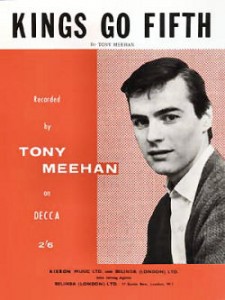 So in 1961 having left the Shadows for any number of possible reasons (depending on who you believe) he wasn’t quite done with drumming. He started making records with Jet Harris who’d played bass with him originally with the Vipers and subsequently of course with Cliff Richard. Tony had also been making records with a young girl called Louise Cordet who was well-connected just happened to be Prince Phillip’s Goddaughter and her father ran a posh watering hole called ‘The Saddle Room’. She put out a successful record called ‘I’m Just A Baby’ which Apache’s composer Jerry Lordan wrote and Tony arranged and produced.
So in 1961 having left the Shadows for any number of possible reasons (depending on who you believe) he wasn’t quite done with drumming. He started making records with Jet Harris who’d played bass with him originally with the Vipers and subsequently of course with Cliff Richard. Tony had also been making records with a young girl called Louise Cordet who was well-connected just happened to be Prince Phillip’s Goddaughter and her father ran a posh watering hole called ‘The Saddle Room’. She put out a successful record called ‘I’m Just A Baby’ which Apache’s composer Jerry Lordan wrote and Tony arranged and produced.
By this time he was working with Decca records in West Hampstead as an A&R manager and was present at the infamous audition on January 1st, 1962 with Dick Rowe where the Beatles were rejected in favour of Brian Poole (with or without the Tremeloes, again depending on whose account you believe) because it appeared “guitar groups were finished”!
However his next project, The Jet and Tony records were about to be produced by him and they would immediately be well-received simply because they were professionally put together, tapped into the instrumental music which was popular and competed extremely well against what his original group, The Shadows were releasing at the time.
The first of these singles was called ‘Diamonds’ and written like the second called ‘Scarlett O’Hara’ by Jerry Lordan. Diamonds went to Number 1 in the charts with Jimmy Page on guitar while Scarlett O’Hara peaked at Number 2. After the third single ‘Applejack’ Jet went his own way.
But it’s what came next which may well have defined Tony Meehan not only as a player but as a band-leader too. While Jet Harris was unsuccessfully battling with his demons Tony was working on something else – his own group.
He decided to go it alone with the ‘Tony Meehan Combo’ which included some surprising players; John McLaughlin and John Baldwin. Unfortunately the sort of gigs they did were pop-orientated on package tours left over from previous contractual commitments from the Jet and Tony duo. Unfortunately the unsophisticated audience wanted to hear Shadows tunes and ’Jet and Tony’ tunes whereas his combo were capable of pushing the envelope further than any other so-called rock group at the time because of the calibre of its musicians. This was a few years before Progressive rock and the Mahavishnu Orchestra and Led Zepplin were simply a pipe dream even though John McLaughlin and John Baldwin (eventually to be known as John Paul Jones) were in Tony’s combo.
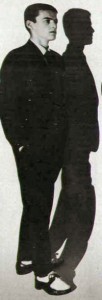 As I said in the last piece I wrote about him he was a proper musician who could turn his hand to anything in the recording studio including engineering. As a producer he worked with Tim Hardin, PP Arnold, Eric Burdon, John Howard, Wishful Thinking, White Trash and Roger Daltrey. Early in his career he played drums on records with sixties pop stars like Billy Fury, John Leyton and Frank Ifield. He even recorded with a band called ‘Ian Stewart and the Railroaders’ which besides the aforementioned Ian Stewart included Bill Wyman and Keith Richard. While some of this was going on Tony was working at Decca Records in West Hampstead as an A&R Manager. Subsequently he was one of the first A&R men to negotiate an independent contract with any record company, this meant he could freelance and make records for anybody who wanted him.
As I said in the last piece I wrote about him he was a proper musician who could turn his hand to anything in the recording studio including engineering. As a producer he worked with Tim Hardin, PP Arnold, Eric Burdon, John Howard, Wishful Thinking, White Trash and Roger Daltrey. Early in his career he played drums on records with sixties pop stars like Billy Fury, John Leyton and Frank Ifield. He even recorded with a band called ‘Ian Stewart and the Railroaders’ which besides the aforementioned Ian Stewart included Bill Wyman and Keith Richard. While some of this was going on Tony was working at Decca Records in West Hampstead as an A&R Manager. Subsequently he was one of the first A&R men to negotiate an independent contract with any record company, this meant he could freelance and make records for anybody who wanted him.
I mentioned his technical prowess in the studio and I experienced this at first hand because he produced quite a few records which I played on. To be honest some drummer/producers can be difficult to work with especially if they think they can make a better job of the recording than the session drummer can. Tony Meehan wasn’t at all like this and always let the drummer get on with it. (He was the first producer to ever ask me whether I could ‘feel’ the tune we were routining and often came to sit with me to see how I was doing something.)
Drum set-wise, unless you happened to see him in that very earliest skiffle group around 1956, he first came to anybody’s notice with a White Marine Pearl Ajax drum set with Tony painted on the front of the bass drum, although his very first drum set was a ‘Bitsa’ which was a parental Christmas present bought from Blanks of Kilburn who were just down the road from where the Meehan family lived. Rumour has it they paid £5 for the set. Eddie Ryan told me he wasn’t actually an Ajax endorser but since Boosey and Hawkes’ factory was in his neighbourhood they evidently looked after him. To prove he certainly wasn’t an endorser Eddie told me Tony borrowed £50 from his mother to buy a 12 x 8” tom because prior to that he only had the Ajax bass drum, snare drum and floor tom.
Incidentally, the bass drum was painted with his Christian name by Eddie Stokes who several years later would be responsible (although not I’m told properly remunerated for) that ultra-famous Beatles logo with the raised ’B’ and the dropped ‘T’.
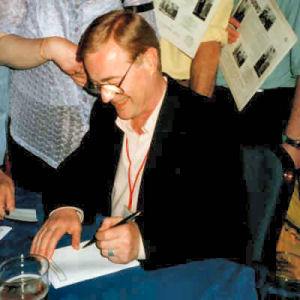 Eddie Ryan also told me that Tony brought his Gretsch ‘Progressive Jazz’ kit back from the States after that ‘slumbering’ tour and he brought the snare drum to him to be fitted with calf-skin heads. Believe it or not it had plastic heads which nobody had seen here before and evidently everybody laughed at! Tony admired Max Roach and bought the Gretsch set in Champagne Sparkle to be like him.
Eddie Ryan also told me that Tony brought his Gretsch ‘Progressive Jazz’ kit back from the States after that ‘slumbering’ tour and he brought the snare drum to him to be fitted with calf-skin heads. Believe it or not it had plastic heads which nobody had seen here before and evidently everybody laughed at! Tony admired Max Roach and bought the Gretsch set in Champagne Sparkle to be like him.
Tony also had a Trixon kit around 1964 courtesy of Ken Spacey at Ivor Arbiter’s Drum City and there are pictures of him with a Ludwig set in silver glitter although this may have been borrowed.
I had always thought that Tony Meehan was completely right-handed but while I was researching this I came across a photo of him signing an autograph left-handed. If he was ambidextrous that would explain a lot!
Tony Meehan sadly died after a fall at his home in Maida Vale, London on 28th November 2005 and I stood alongside Clem Cattini and Brian Bennett at the funeral. As a practising Catholic Tony had a requiem mass complete with his favourite hymns from our formative years. Clem and I, as upstanding Jesuit-educated pupils, sang these deeply evocative anthems lustily.
Bob Henrit
November 2014

